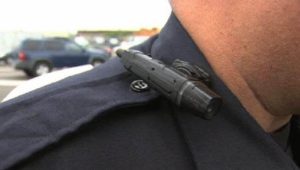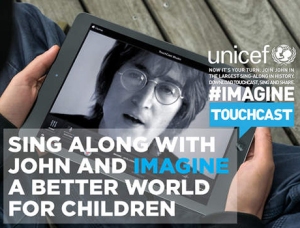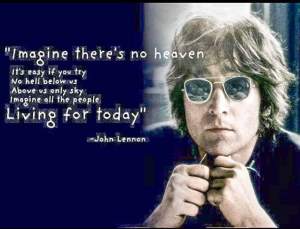
By: Cynthia M. Lardner
Introduction
It was August 9, 2014 when 18-year-old Michael Brown was fatally shot by police officer Darren Wilson in Ferguson, Missouri. Michael Brown was not and never will be a statistic. He had a family and friends. He was a young man just embarking upon the journey we call adulthood. No doubt he had hopes and dreams as to what the future might bring. At the time of his death Michael Brown was unarmed. Michael Brown was also African-American. He was Black.
“At the time of the shooting…only three of the 53 Ferguson officers were black, while 67 percent of the city’s 21,000 residents are black
[i]”.
Unlike 1954, when the United States Supreme Court issued its landmark school desegregation opinion in Brown v. The Board of Education prompting widespread divisiveness and even violence, Michael Brown’s death has created unity. From the very beginning, countless unnamed citizens have come together demanding that our Nation’s Constitution be upheld. Human rights are, for the first time, triumphing over deep-seated historical racial and religious biases. The unequivocal message being sent by the majority of citizens in the world’s most revered democratized nation is that we are no longer willing to complacently accept flagrant civil rights violations.
For months after Michael Brown’s demise the world stood waiting, anticipating the United States would continue as the beacon of democracy by holding the police officer, a public servant, accountable for what was not only a senseless death breaching our Constitution but also an act that may have contravened international human rights treatises to which the United States is a signatory
[ii].
The global spotlight was now firmly fixated on the United States as a federal grand jury deliberated whether to return an indictment against the police officer responsible for Michael Brown’s death.
Michael Brown gave the World hope.
On November 24, 2014, the grand jury failed to issue an indictment against the police officer.
Contemporaneous with the issuance of this unfortunate opinion, our Nation expressed its dissatisfaction through the many protests convened. Organizers, de facto defenders of the public trust and true peacekeepers, had anticipated this black day in American history by having laid the foundation for organized and peaceful protests spanning the continent to take place that same evening, which were widely publicized only minutes after the decision was made public. This did not satiate the public.
The gap between the majority position collectively espoused and the grand jury, with the later having been crafted by our founder’s to reflect the majority, is immense. The energy created by what was most certainly a historical event was and remains almost a year later electrifying. It is the catalyst shocking us back to a mode of ‘conscious’ or deliberate thinking, characterized by corroboration and cooperation.
Mayhem Collides With
Reason: The Intervening
Months
The protests that began immediately after Michael Brown’s death have continued without pause. Unlike Nigeria, where we all seem to have forgotten about the “bringing the girls back”, this time the majority was and is insistent that elected officials honor the trust bestowed upon them through the electorate process.
Our voices are projected by the media. And, yes, since Michael Brown’s death, other incidents of un-redressed police brutality have peppered the news, such as New York City’s Carter shooting, and the Cleveland case. However, the media has all but ignored similar instances of police brutality, including similar and rampant racial profiling in Brasil, and China’s persecution of Ilham Tohti, a Muslim scholar whose only crime was his advocacy on behalf of the Muslim people in a remote Chinese province. It remains that Ferguson has held the media’s attention making it the case by which we can all learn from. And learn we must as our Humanity has never before been so desperate for peace.
Seemingly Senseless
A historical review of cases involving police brutality, racism and civil rights violations reflects that not only has our government dishonored our trust but also that we, as citizens, do not openly speak the truth to our leadership, with our primary mode of communication being our right to vote
[iii].
In considering what has transpired, I was reminded of a federal civil rights action brought by Hugh “Buck” Davis, an esteemed and fearless attorney who has dedicated his life to championing the rights of the underdog. His success, for many, would be measured in terms of the number of “wins” but, to me, he is a success because he has always spoken the truth, oftentimes taking cases no one else would touch.
For the last decade, I have often visited with him at his offices; classic and strong like him, constructed of marble, granite and mahogany. Some time ago, Mr. Davis referenced a police brutality case he had been handling for the brother of William C. Scozzari, an African-American man fatally shot at close range by Clare Michigan Police Chief Dwayne Miedzianowski.
According the federal district court:
Scozzari was a hermit and had not allowed anyone, not even family, to enter his cabin in years…While Scozzari loved to collect knives and hatchets, he had no police record, and…had never…engage in any threatening behavior. Scozzari would not talk to people, he only “grunted.” ….[E]verybody in the department knew Scozzari…
…
He had been forced out of his cabin without a warrant, raising constitutional issues. The officers “attempted to kick in his door and order him out of his cabin
in order to arrest him
[iv]”.
“Aside from being schizophrenic, William Scozzari was blind in one eye and hard of hearing, court records show. He stood 5 feet, 3 inches tall and weighed 113 pounds and was known in the community as a recluse who wore a winter coat in the summer and walked aroun
d town with his boots untied
[v].”
Mr. Scozzari was fatally wounded by multiple bullets fired by Chief Miedzianowski, who chose not to retreat or make any attempt to otherwise subdue Mr. Scozzari, but elected to take a human life.
After years of pretrial proceedings, the case went to trial. The jury that returned an unfavorable verdict, just as the grand jury in Michael Brown’s case failed to return an indictment.
“Times They Are A Changing”
Trying to understand, I have asked myself “why”.
This is what I know for sure. While most public officials want to “do good” there are those who are, for whatever reason, incapable of honoring the trust with which they have been bestowed. To hold those breaching our trust accountable, we have a system of “checks and balances”. Enforcement of that system is the responsibility of each and every one of us. To this end, we have failed to be ‘conscious’ and, as such, we have, up until now, collectively failed.
The majority has only been willing to use its voice when anonymity can be preserved. If, however, there is any personal risk, fear holds sway. We have been conditioned to respond to that which we fear rather than to act consistent with what we know is right. We fear losing our family, friends, homes, jobs and all the other things that we categorize as the “good life”.
So, when called upon to defend and demand justice we shirk from our responsibility as citizens to publicly speak the truth. We do so not out of acquiescence but because to do so jeopardizes our own personal freedom rendering us complacent victims of our own fear. This fear is not something we are born into but something that we are taught and that we, in turn, teach.
Fear is generated by being seated as a grand jury member or juror in a high profile civil rights case as those citizens are called upon to hold accountable officials ‘in their backgrounds’ accountable; officials having membership in the entities having the potential to deprive them and their loved ones of the ‘good life’.
“The reality is that no group of countries has any grounds for complacency about its own human rights performance and no group of countries does itself justice by automatically slipping into the “victim” mode,” stated Nobel Laureate Kofi Annan.
This is what happened in Ferguson. The grand jury was to have honored the majority’s needs, wants and desires to dwell in a harmonious, respectful and peaceful society consistent with our Constitution. The members of that grand jury were expected to return an indictment. The grand jury failed to do so because they were conditioned so that fear, not reason, held sway. The same was true in Mr. Scozzari’s case.
“We the People” are now delivering a powerful message to those guilty of malfeasance, misfeasance and nonfeasance that continued human rights violations will no longer be tolerated. We are beginning to heed our instinctual inner voice.
Doing Right
Ferguson represents a shift to conscious thinking.
“You cannot make yourself feel something you do not feel, but you can make yourself do right in spite of your feelings,” suggested the late author Pearl S. Buck
Thus, while Michael Brown’s death may have been senseless ‘consciousness is now driving the universe’ as it represents the first police brutality case in which a majority has come together and taken a strong and unified collective position. In that sense, perhaps we might re-conceptualize Ferguson as a victory.
“When there is a terrible problem, when thinking and the behavior has taken us to a place which is malignant, which is even maladaptive for our survival, there is also something in us which is programmed to correct the system
[vi]”, reflected spiritualist Marianne Williamson.
When those universal laws kick-in and we participate in conscious self-correction, we move from fear-based thinking to love-based thinking. This shift is occurring.
In response to widespread public outcry, the United States Department of Justice launched an investigation into the practices, policies and procedures of the Ferguson Police Department (FPD). In March 2015, it released a report that the FPD had engaged in misconduct by having engaged in an unconstitutional ‘pattern and practice’ of discriminatory conduct. It has been characterized as, “a scathing report that cited racial bias and profiling in Ferguson policing and a profit-driven municipal court system that frequently targeted blacks
[vii].”
A statement was issued this past week by the FPD that it was proactively working to create a more diverse police force representing the community’s demographic make-up.
There has been citizen response as to police conduct. A local group has spearheaded an effort to join a national initiative that all police officers be required to wear cameras while on duty thus creating an accurate record of what transpires during interactions
[viii].
The primary tool that ‘We the People’ possess is our Constitutional right to vote. We choose our leaders. There is no fear of reprisal in the electorate process.
“[F]inally persuading the 50 million Americans who do not vote that by not voting they make it possible for people who do not agree with them, do not support their aspirations, to call the shots
[ix],” stated Hillary Clinton at a recent public forum held just outside of Ferguson
We need to continue moving forward as a unified Nation, respectful of differences and trusting in one another to defend and demand freedom for those whom it has been or could be denied.
“Words like freedom, justice, democracy are not common concepts; on the contrary, they are rare. People are not born knowing what these are. It takes enormous and, above all, individual effort to arrive at the respect for other people that these words imply,” wrote the late African-American author and playwright James Baldwin.
Sadly, there has remained some divisiveness. Across the country, but again, with the spotlight on Ferguson, there have been continued acts of violence against person and property. The most recent report was that, “Vandals have targeted monuments dedicated to the leaders and soldiers of the Confederacy, painting the slogan “Black lives matter” on memorials in a half-dozen states where the landmarks stand tall in parks and outside government buildings
[x].”
Mrs. Clinton expounded, “Despite our best efforts and our highest hopes, America’s long struggle with race is far from finished. We can’t hide from hard truths about race and justice. We have to name them, own them and change them”
[xi].
The reality is that all lives matter.
In the words of former President Jimmy Carter:
We will have an unchallenged, open, panoramic opportunity on a global scale to demonstrate the finest aspects of what we know in this country: peace, freedom, democracy, human rights, benevolent sharing, love, the easing of human suffering. Is that going to be our list of priorities or not?
About the Author
Cynthia M. Lardner holds a journalism degree, she is a licensed attorney and trained as a clinical therapist. Her philosophy is to collectively influence conscious global thinking understanding that everything and everyone is subject to change given the right circumstances; Standard Theory or Theory of Everything.
This paper is dedicated to my friend, teacher and mentor Hugh “Buck” Davis.
[ii] The Universal Declaration of Human Rights (1948) was drafted by the UN Commission on Human Rights in 1947 and 1948. The Declaration was adopted by the United Nations General Assembly on 10 December 1948. Amongst other human rights, this declaration enunciates certain fundamental human rights of every human being which are which are of special interest in the study of the ethics of circumcision. They are the rights to security of person, to freedom from torture and other cruel and unusual treatment, and to privacy. Motherhood and childhood have a right to special protection.
[iv] Scozzari v. City of Clare, 723 F. Supp.2d 945 (E.D. Mich. 2010)(references omitted);
Scozzari v. Miedzianowski, 454 F. App. 455 (6th Cir. 2012).
[vii] Suhr, Jim, Infra Endnote No. i.
[viii] Madhani, Ahmer, “Ferguson residents petition for police body camera rules”, June 23, 2015, USA Today, as found on the www at
http://www.usatoday.com/story/news/2015/06/23/ferguson-residents-push-for-body-camera-rules/29179439/ (“A group of residents in Ferguson, Mo., announced Tuesday that they are launching a petition drive to amend the city charter to mandate that the city’s police officers wear police body cameras while on duty and establish other rules regulating the use of the devices.”). See also “More police body cameras, more public trust”, June 27, 2015, The Sun Sentinel, as found on the www at
http://www.sun-sentinel.com/opinion/editorials/fl-broward-sheriff-body-cams-dv-20150627-story.html (“Once collectively skeptical, more police departments are turning to body cameras to hold officers accountable, regain public trust and protect good officers doing their jobs from errant or made-up accusations of unjustifiable use of force.).
[ix] Karni, Annie, Supra Endnote No. ix.
[x] “Vandals target Confederate monuments, paint post-Ferguson slogan in graffiti in 6 states”, June 26, 2015, Fox News, as found on the www at
http://www.foxnews.com/us/2015/06/26/vandals-target-confederate-monuments-paint-post-ferguson-slogan-in-graffiti-in/ (“The graffiti reflects the racial tension that permeates post-Ferguson America, more than a week after a white gunman shot and killed nine black congregants at a Charleston, South Carolina, church… Michael Allen, a lecturer in American culture studies at Washington University in St. Louis, compared the vandalism to the toppling of statues in Russia at the end of the Soviet empire.”).






